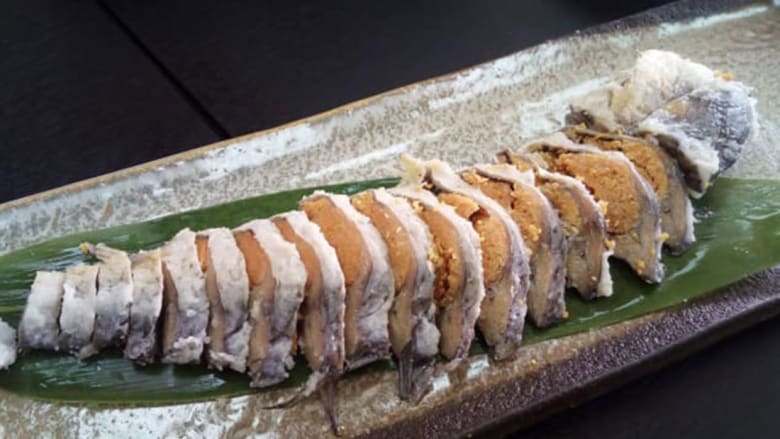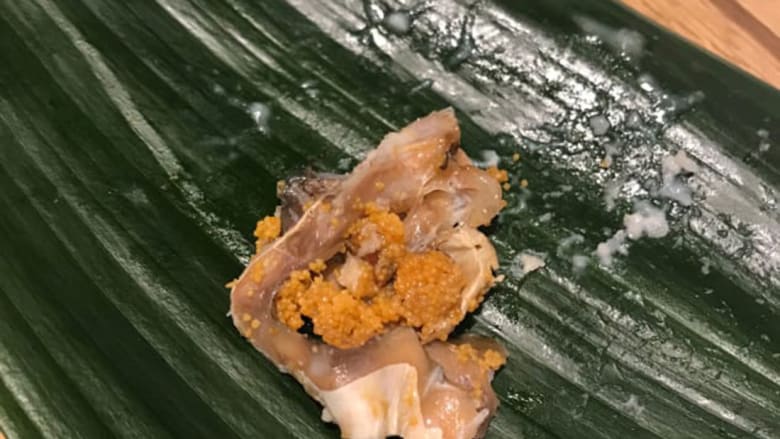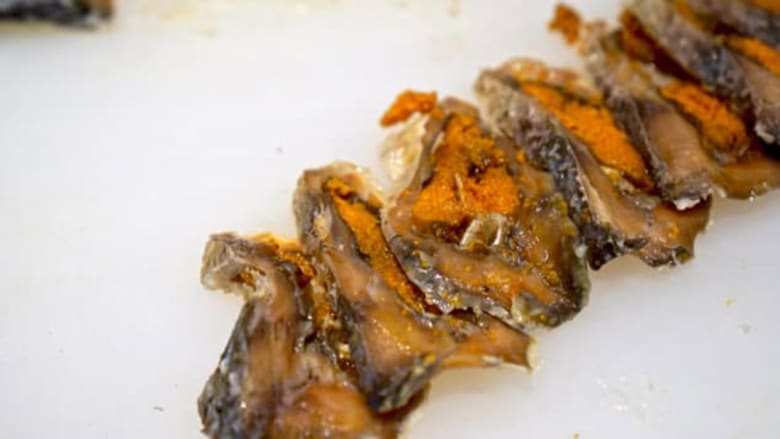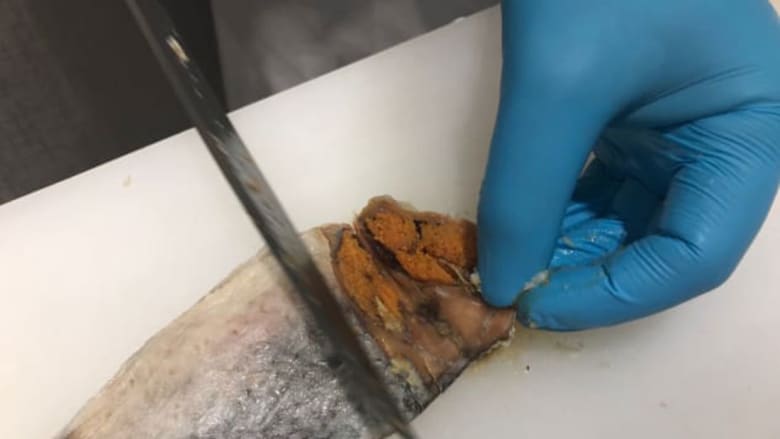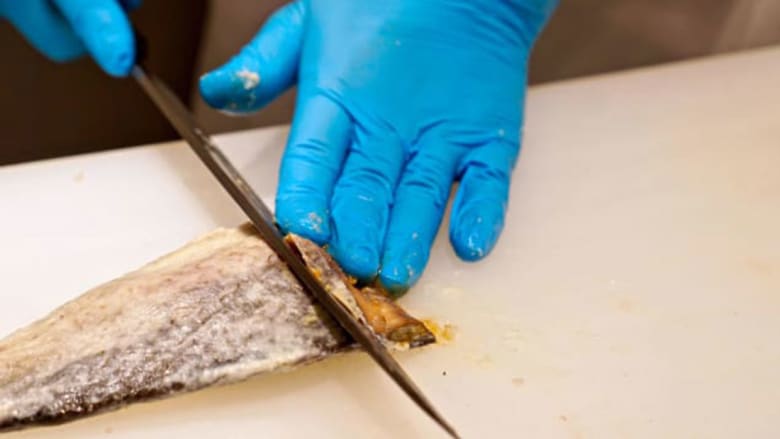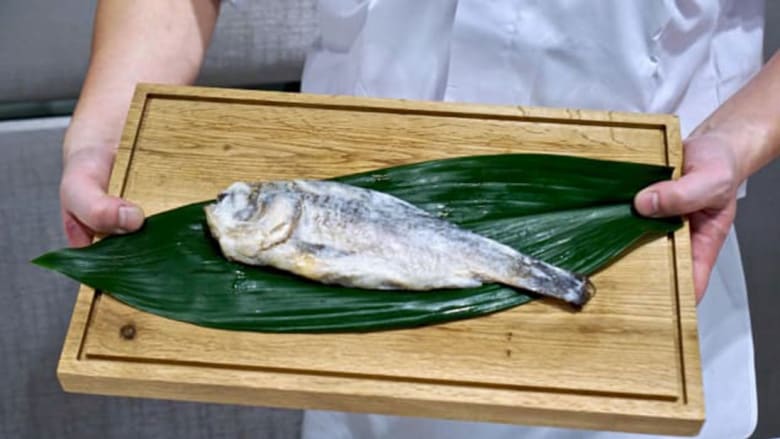دبي، الإمارات العربية المتحدة (CNN) -- يحذّر الشيف التنفيذي في فندق "ليك بيوا ماريوت" كازويوكي أوهاشي من فتح لفافة من سوشي "الناريزوشي" أمام حشد من الضيوف جاؤوا لتناول وجبة العشاء في الفندق، قائلاً إن رائحته "تُشبه الجبن الأزرق المتعفن..ورغم أن بعض الناس يحبون الطعم، إلا أن رائحته قوية جداً."
ويتحدث أوهاشي هنا عن السوشي ولكن ليس النوع الذي يتناوله غالبيتنا. ويُعتبر "الناريزوشي،" من الأنواع الأكثر بدائية من السوشي، ويختلف تماماً عن لفافات السوشي المعروفة في المدن غير اليابانية من حول العالم.
ويعود تاريخه إلى القرن العاشر في اليابان، إذ تُخمر الأسماك مع الملح والأرز الخام، وتُشبه ما يُسمى بسوشي النيغيري أي (شرائح المأكولات البحرية التي تُوضع على الأرز.)
وما زال "الناريزوشي" شائعاً في محافظة شيغا، كتقليد قديم للغذاء، وهو عبارة عن سمك مخمر ومخلل مع الأرز، وهي ممارسة مشتركة في الكثير من المناطق في جنوب شرق آسيا.
ويُعتقد أن "الناريزوشي" وصل إلى اليابان، في القرن الثامن، ولكن وثائق مكتوبة من "الناريزوشي" لم تظهر حتى القرن العاشر.
ويُوضح الشيف أوهاشي: "ليس واضحاً تماماً متى بدأ تقليد الناريزوشي بالتحديد، ولكن الكثير من الناس هنا يعتبرونه بمثابة تقليد عائلي،" مضيفاً: "الكثير من العائلات لديها وصفتها الخاصة، والتي تنتقل من جيل إلى جيل."
وحول بحيرة بيوا وهي أكبر بحيرة في اليابان، إلى الشمال مباشرة من كيوتو، اُعتبر "الناريزوشي" بمثابة غذاء تقليدي منزلي، ومصدر مهم للبروتين.
وفي وقت قبل ابتكار الثلاجات، اعتمدت الأسر على الأرز والملح لتخمير الأسماك والحفاظ عليها، وقامت بتخزينها في براميل، بهدف الإبقاء عليها لفترات طويلة.
ويُصنع "الناريزوشي" من أسماك أصفر الذيل، والماكاريل، ولكن النوع الأكثر شيوعاً في منطقة بحيرة بيوا هو سمك الفونازوشي.
وتتمتع غالبية الأسر، بوصفة متميزة خاصة بها، ولكن جميعها تشترك بمنهجية مماثلة، أي أولاً: تحجيم الأسماك، وومن ثم تقطيعها، وحفظها في الملح لعدة أشهر، وبعد ذلك خلطها مع الأرز، وتركها لتتخمر.
وإذا كان هناك مساحة تخزين مظلمة في درجة حرارة الغرفة، فإنه يمكن ترك الأسماك لعدة أشهر أو سنوات أو حتى عقود.
ولعدة قرون، كان الناس يتناولون السمك فقط ويرمون الأرز المخمر بعيداً. ولكن خلال القرن الخامس عشر، بدأ الناس يستهلكون نصف الأسماك المخمرة والأرز معاً، ما مهد الطريق إلى صنع السوشي الحديث.
وللوهلة الأولى، فإن "الناريزوشي" لا يُشبه السوشي الذي نتناوله حالياً في المطاعم أبداً. وعادة ما يُباع كسمكة كاملة واحدة، مغطاة بصلصة تُشبه الزبادي.
وبهدف تقديمها، يقطع طهاة السوشي السمكة إلى شرائح رقيقة، ويضعونها فوق الأرز. وعادة، ما يُباع "الناريزوشي" المخمر بمئات الدولارات.
